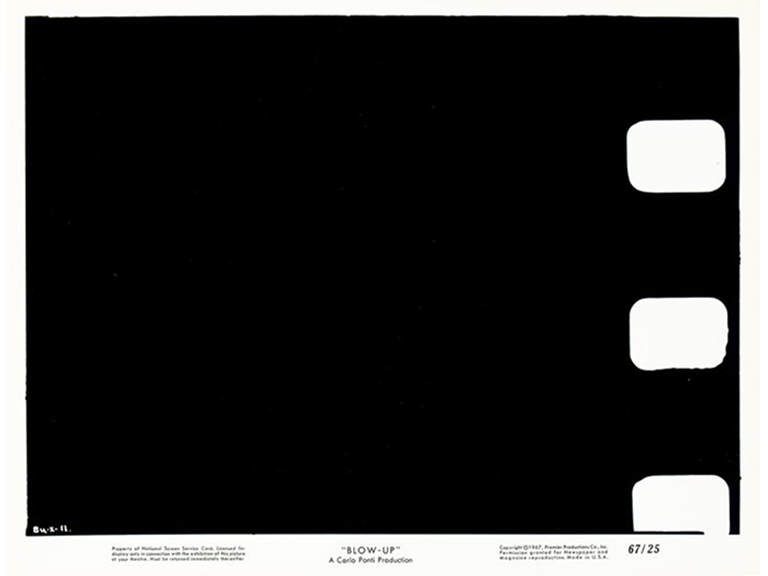
In our flat content world, what becomes of classic filmmakers who haven't died yet? And will anyone replace them?
On June 12, a fund raising campaign for Siberia, a new film project from the notorious New York independent filmmaker Abel Ferrara and his frequent collaborator Willem Dafoe, ended with little fanfare. It had failed to reach its crowdfunding goal of $500,000, having secured only $18,725 in pledges. When I made mention of the sure to fail campaign on Facebook the night before the Kickstarter deadline one veteran film producer quipped, “Lesson #1: don't announce a populist funding campaign at a private nightclub in Cannes.” Indeed, the campaign for Siberia seemed doomed from the start.
In the initial video for the project, Ferrara stands in what looks to be an empty upscale restaurant and makes a fidgety, awkward pitch for the film directly to the camera. He is wearing the same clothing in footage from the press conference that announced the campaign during this year’s Cannes Film Festival, where the 63 year old’s work often premieres. “Don’t let five companies decide what everybody’s going to watch, alright? Be free,” Ferrara said in his typically rambling, free-associative fashion, in a courtyard that looks like it could be attached to a private nightclub in Cannes. “This idea of the Internet, honestly… the day they showed me the first Mac, okay? You know, the Kickstarter thing works bro, and I want it to work for me because there’s no one else.”
One of the key aspects of any crowdfunding campaign is need, or at least its appearance. Yet celebrities from Spike Lee to Zach Braff have led successful Kickstarter campaigns for their own films. Each was able to raise millions of dollars on the site by leveraging their reputations, and they both turned around dreadful films as a result. Kickstarter projects fail all the time, but until Ferrara’s, the most notorious failed Kickstarter film campaign was likely Darci’s Walk of Shame, a still unrealized vehicle for former Sabrina, The Teenage Witch star Melissa Joan Hart. Raising only $50,000 of the $2 million she sought, Hart and her collaborators abandoned and deleted the project instead of facing the embarrassment of having a failed campaign page living on in posterity, as many, such as Ferrara’s still do.
A native of the working-class Northern Bronx who has now made movies for nearly four decades, Ferrara has had a charmed career. He is not nearly as famous (or as wealthy) as Lee or Braff, but given his reputation, it has come as a legitimate and dismaying surprise to many that Ferrara was unable to successfully fund the film. Ms. 45, King of New York, and Bad Lieutenant are legendary hallmarks of a certain kind of low budget, pre-Giuliani New York crime cinema. But turning to crowdfunding for the first time after a nasty public split over final cut on his new film with his longtime French financier and sales agency Wild Bunch smelled of desperation. Although he has a loyal following and his movies almost always have big names in them, Ferrara doesn’t have much of a paying audience in his country of origin. 1996’s The Funeral, with Christopher Walken, Vincent Gallo, and Benecio Del Toro made $1.2 million at the U.S. box office. The most any of his eight narrative features has made there since is the $21,000 1999’s William Gibson adaptation New Rose Hotel earned in a tiny theatrical run. Although the European stars he often works with lend prestige and foreign sales prospects, the model that allowed Ferrara to make films has long been in decline.
Lee and Ferrara are not the only ones signing into Kickstarter with hat in hand after the arrangements they had in the past with big American studios or prominent European sales companies fell by the wayside. As traditional sources of specialty film financing have become harder and harder to come by connecting with audiences and donors through crowdfunding has become a burden many filmmakers of Ferrara’s generation have had to take on to continue working. The results for many of the elder statesmen in this new media landscape have been mixed. Haile Gerima, a key figure in the Los Angeles School of Black Filmmakers and the director of the recent Venice prize winner Teza, has raised just $62,318 of the $500,000 he has sought for his newest project on IndieGoGo. The project saw a slight uptick in donations after Ava DuVernay posted about it on her twitter recently with three weeks to go, but it didn’t last. Frederick Wiseman, one of the patron saints of cinema verite, raised $20,516 of the $75,000 he sought on Kickstarter for his new film Jackson Heights, which will make its premiere at month’s end at the 72nd Venice Film Festival as a Work In Progress. In an essay from the New York Times Magazine that ran last October about “Old Masters,” Lewis Lapham asks Wiseman if he has any advice for young filmmakers. “Marry rich,” he responds.
John Waters and Steven Soderbergh have, quite publicly, given up on making more movies (at least for the time being, and in Soderbergh’s case, disingenuously). In an era in which traditional gatekeepers are increasingly marginalized and algorithms decide which new movies will be mentioned in your Facebook newsfeed, the Paul Schraders and Hal Hartleys of the world, despite the successful Kickstarter campaigns they ran, have little drawing power or name recognition. While the middle aged humanities professor who loved Blue Collar and Henry Fool might not know what Kickstarter is, his film-student son is likely too young to have encountered those directors’ work. Having lived and worked in an era with fewer players and a lot more money, many of these artists are now faced with shrinking budgets and crowded release windows, which makes their work smaller in scale and less relevant to the culture at large. If they want to continue making features, it seems they’ll have to get used to it. Which begs the question, is it still worth it?
…
Some of the people charged with mentoring a new generation of American independent filmmakers don’t seem to think so. At the recently concluded Seattle International Film Festival’s annual “catalyst brunch,” the Independent Filmmaker Project’s Amy Dotson gave a fearless keynote address. The organization she is Deputy Director and Head of Programming of is, by its own word, the oldest “non profit organization created to support the courageous work of artists and technicians working in independent film.” It still claims to be first and foremost about shepherding new voices into the cinematic sphere. Yet, at the beginning of last year’s Independent Film Week, a yearly confab of makers, producers, and industry types that the IFP holds each September, Executive Director Joana Vicente told Indiewire that “There are too many films out there.” Dotson’s speech to the assembled directors and producers, programmers and publicists, guests and donors in Seattle was even more declarative. “You are not a filmmaker,” she said, “You can be a filmmaker, of course, but you cannot continue to singularly define yourself as such.”
Dotson went on to claim that reverence for movie culture was one of the problems with the young content-makers. “We’re all trying to find a way to embrace the ambiguity of this new era we live in where web series and Vine videos are the new sketchpads,” she said. “Where mad scientists and technologists are trying to figure out the best way to create immersive experiences out of cardboard and a halo of cameras. Where there are more possibilities than ever to have your voice heard if we stop buying into the myth of the Cinema with a capital ‘C’ as the end all be all pinnacle of creative artistry.”
This speech had little to do with the fact that film stock is rarely projected anymore, regardless of whether people are making two-hour motion pictures. She’s more concerned with how artists, especially young ones, are perceived. Dotson explained that it was a “disservice” to simply call Jane Eyre and True Detective director Cary Fukanaga a filmmaker, that the term “diminished the talents” of Pariah director Dee Rees and “takes the edge off” of Obvious Child’s Gillian Robespierre and “belittles” Girls co-star Desiree Akhavan, who made the forgettable feature Appropriate Behavior. Why? Because these folks make television series and commercials and animated series too.
Before an industry rose up around independent filmmaking from the late ‘50s to late ‘80s, the driving desire that fueled the practice -- from the romantic experimentalist visions of Stan Brakhage through the structuralist freak outs of Michael Snow, from the searing relationship films of John Cassavetes to the quiet, lyrical wonder of Charles Burnett’s early work -- was to somehow get by making unusual, hard-to-classify work outside of the system, where there was integrity and artistic freedom, where the demands of the commercial marketplace didn’t mean a damn. This, in his ham-fisted way, is the tradition Ferrara was making light of at his press conference. The filmmakers behind the American Independent film’s last aesthetic movements, from the aforementioned LA School to No Wave Cinema, made and exhibited their work in unusual ways, but they didn’t seek to use it as a springboard to directing superhero movies or soap commercials. They very much sought to be niche specialists.
In the days when these filmmakers all worked on the margins of what would become the independent film industry, “sell out” was still a widely used pejorative and corporate television had yet to embrace the aesthetics that independent filmmaking was forming. The goal among many producers was to create a sustainable independent filmmakers ecosystem by catering to underserved audiences and selling to foreign distributors and television on a consistent basis. The path that was taken by independents who came to prominence in the late 90s, such as Quentin Tarantino, Christopher Nolan, and Darren Aronofsky, of using idiosyncratic independent filmmaking as a road to big-budget Hollywood work, wasn’t well-trod yet. The insinuation of Dotson’s speech, even as she highlights examples of filmmakers whose Sundance-supported first features led to bigger things, is that the original ethos is dead and buried. Even as America produces more filmmakers than ever, those are not footsteps, Dotson warns, that they should attempt to follow.
“Encourage people you work with and in your communities to become platform agnostic when they tell stories,” Dotson offered toward the end of the speech, “To question if those dusty screenplays you are writing shouldn’t be modified to Snapchat, web series, or games.” Is this what every independent filmmaker should want? To be embraced by corporations and the entertainment mainstream? To have to be good at three or five different disciplines instead of just one? In Dotson’s telling, it’s unavoidable. These well-meaning artists will have to adopt another stance, as filmmakers are analog, too serious, and not platform-agnostic enough to allure corporate suits. Filmmakers don’t make any money; Just ask Abel Ferrara.
